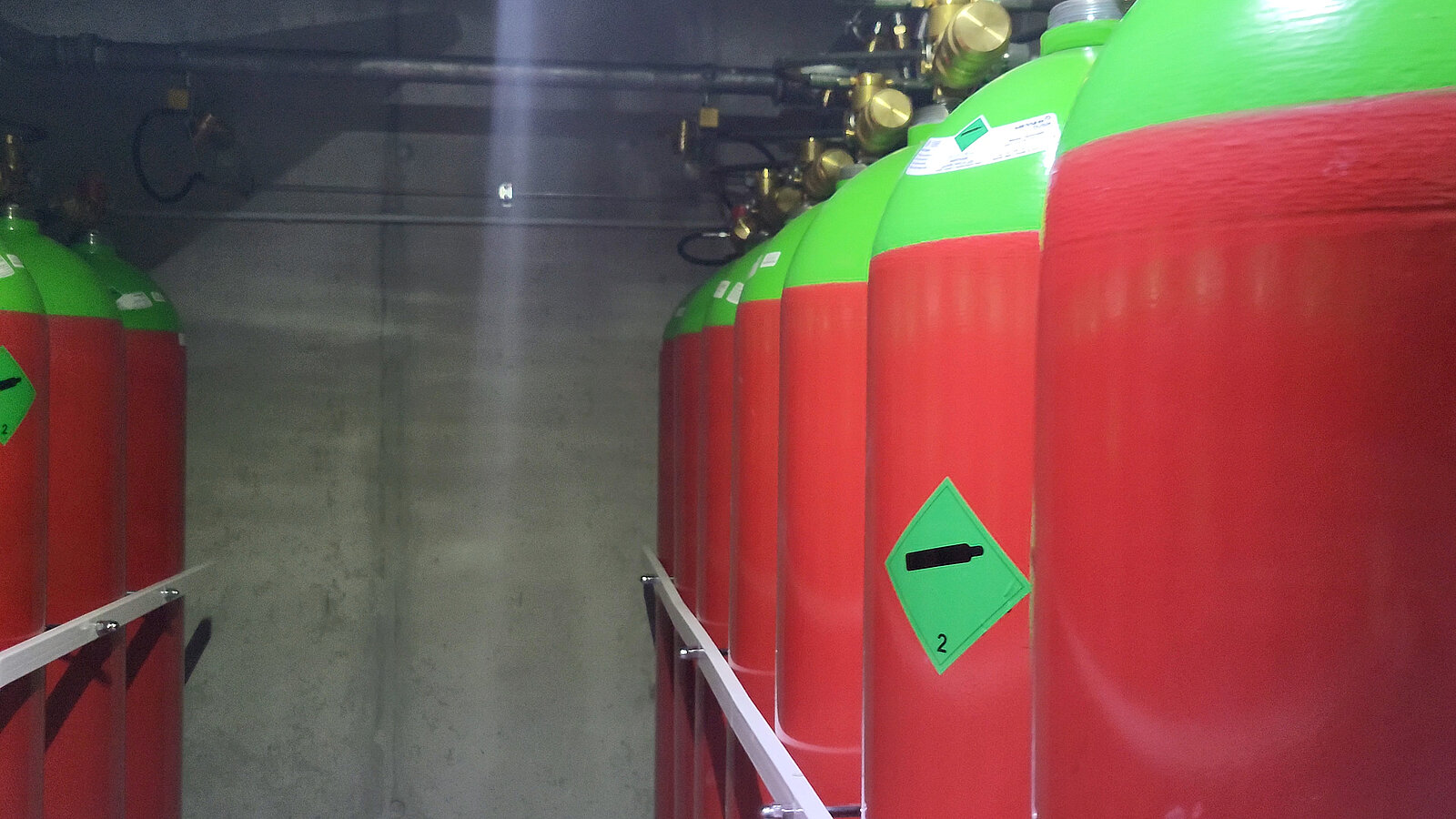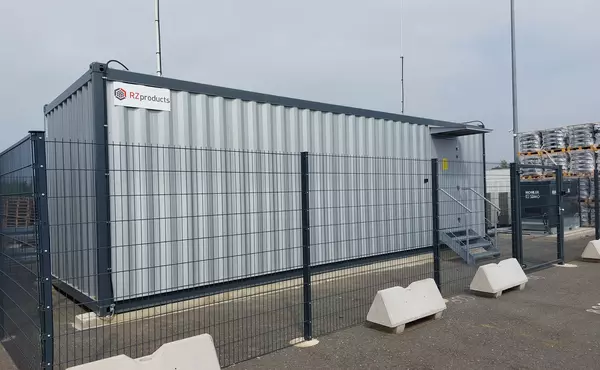Data centers make up the backbone of our digital world. From the processing of global financial transactions to the operation of communication networks and the storage of sensitive health data - numerous processes in our everyday lives depend on the availability and security of this infrastructure. A fire in a data center could not only cause the loss of valuable data and significant economic damage, but also paralyze critical services that millions of people rely on. For this reason, it is essential to take preventative measures and be able to act effectively in case of an emergency.
Prevention as the first line of defense
Preventive fire protection is the key to preventing fires in data centers in the early stages. A difference needs to be made here between structural fire protection and specific fire protection for data centers.
Structural fire protection: This includes the use of fire-resistant building materials that can prevent the flames from spreading. Fire doors and walls as well as separate fire compartments play a key role in containing fires. The installation of smoke extraction systems to discharge smoke gases is also essential.
However, the requirements of building fire protection are not sufficient for IT hardware. The standard fire protection “structural fire protection in accordance with EN 1363” and IT fire protection in accordance with EN 1047-2 are very different. For example, EN 1363 only tests individual components (“component testing”), but not the product itself. However, testing the product as a complete unit, known as “type testing”, is absolutely essential to ensure the highest possible level of IT protection. Although a proven F90 fire resistance in accordance with the general DIN standards for buildings meets the structural fire protection requirements, it does not meet the loading requirements for IT systems.
Compliance with EN 1047-2 limits is therefore a must to ensure high availability.
Technical and organizational fire protection in the data center: The focus is on identifying and eliminating potential fire hazards. Regular maintenance and inspection of electrical equipment and air conditioning systems is essential to prevent failures and overheating. Smoke detectors and thermal sensors ensure early detection of potential fire hazards. Continuous monitoring with monitoring systems that immediately report temperature or humidity deviations is also essential.
Standards such as DIN EN 50600 provide guidelines for the planning and implementation of secure IT infrastructures. A sustainable fire protection concept also requires clear documentation and regular staff training in order to effectively implement preventive fire protection.
Every data center should have a comprehensive emergency manual that outlines detailed procedures in the event of a fire. Regular employee training and drills are essential to ensure that everyone knows what to do in an emergency. This includes evacuation plans, emergency contacts, and clear instructions for raising the alarm and working with the fire department.
In addition, all infrastructure must be designed to quickly disconnect affected areas from the power grid in the event of a fire. A well-prepared emergency plan minimizes the risk to people and equipment in the event of an emergency.
Emergency management and behavior in the event of an emergency
Every data center should have a comprehensive emergency manual that outlines detailed procedures in the event of a fire. Regular employee training and drills are essential to ensure that everyone knows what to do in an emergency. This includes evacuation plans, emergency contacts, and clear instructions for raising the alarm and working with the fire department.
In addition, all infrastructure must be designed to quickly disconnect affected areas from the power grid in the event of a fire. A well-prepared emergency plan minimizes the risk to people and equipment in the event of an emergency.
Special extinguishing methods for data centers
Data centers require specialized extinguishing technologies because traditional water extinguishing systems can often cause irreparable damage to sensitive hardware. The following systems are commonly used:
Gas extinguishing systems: These systems are very common in data centers. They use inert gases, such as argon or nitrogen, to reduce the amount of oxygen in the air, smothering the fire. An alternative is chemical fire suppressants, such as FK-5-1-12, which cool the fire source and interrupt chemical reactions.
However, gas extinguishing systems raise questions about sustainability. Many of the chemical extinguishing agents used are F-gases, which are harmful to the climate and fall under the EU regulation on fluorinated greenhouse gases. In the future, more environmentally friendly alternatives such as natural inert gases may become more important. Operators should therefore consider the long-term environmental impact of their choice.
Water mist systems: These systems spray an ultra-fine water mist that effectively cools hot surfaces and prevents the spread of fires. The advantage is the small amount of water used, which minimizes the risk of water damage. The downside is that they have limited use in areas with sensitive electronics.
Powder extinguishing systems: These are less common because the extinguishing powder used can contaminate sensitive hardware. These systems are best suited for special applications or ancillary areas such as small mechanical rooms, peripheral areas, or in the early stages of a fire.
Oxygen Reduction Systems: Another method of data center fire protection is continuous oxygen reduction. This involves the addition of nitrogen to reduce the oxygen level in the room air to a level that prevents the ignition of fires, but is still safe for people to breathe. This technology provides continuous fire protection rather than reactive fire protection. It is highly efficient and leaves no residue or damage to hardware. However, high installation and operating costs must be considered, as well as the need for personnel safety precautions. In addition, the building envelope must be particularly tight, which places special demands on the building and its architecture and design.
Behavior after the fire
After a fire, a quick assessment of the damage is essential. The affected areas should be checked for structural and technical damage. Data loss can be minimized with redundant systems such as geo-redundancy or cloud backups. These redundancies ensure that critical information remains available even if one site fails.
In addition, all fire extinguisher residue should be removed and faulty hardware should be replaced. An after-action report on the cause of the fire and the emergency management response will help minimize future risks.
Conclusion
Effective fire protection in data centers requires a well-thought-out approach based on several pillars: sustainable and effective extinguishing systems, comprehensive emergency management, continuous monitoring and preventive measures. Regular training and simulations ensure that everyone involved knows what to do in an emergency. Operators who consistently implement these aspects minimize downtime and damage while ensuring the security of their IT infrastructure and associated services.
Title picture: © Bettina / #374525605 / stock.adobe.com (Standard licence)





